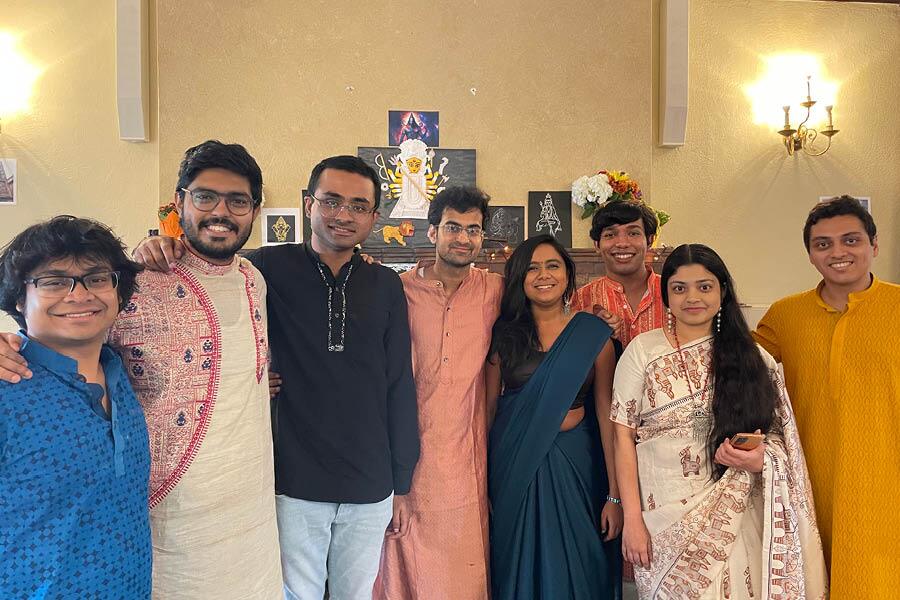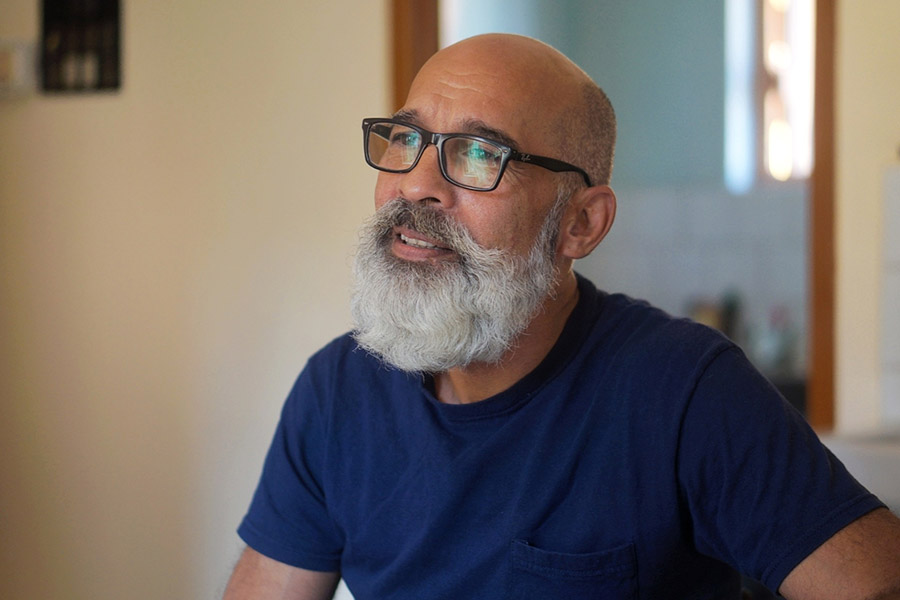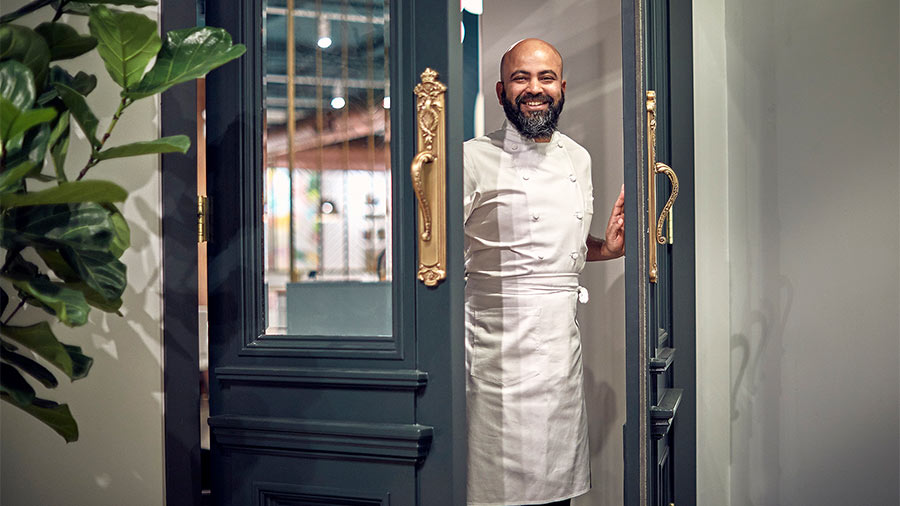When Soumik Ghosh, a fourth-year Ph.D. student in the Department of Computer Science, arrived at the University of Chicago in 2021, all he wanted was a community he could call his own. Initially, he did find a few fellow Bengalis scattered across different departments. He also encountered noted Bengali academics such as historian Dipesh Chakrabarty and scientist Supratik Guha, but then, there was no Bengali community. It was then that he, along with other graduate students, conceived the idea of 'Kheyal' — a student club that celebrates the Bengali culture.
‘Kheyal is unique because it was started by Bengalis from West Bengal’
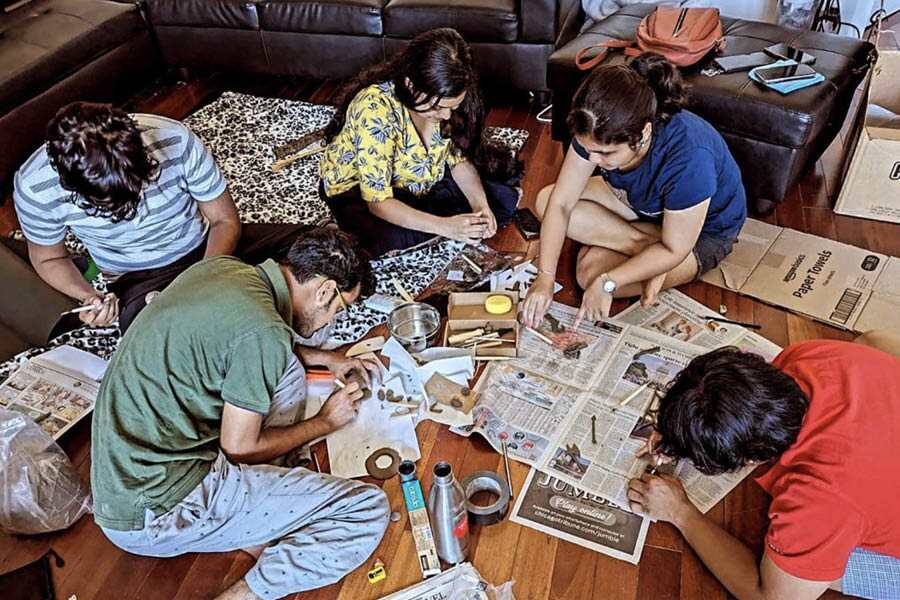
Members of Kheyal at work
But what about other South Asian and Bengali clubs? Soumik clarifies that while a South Asian cultural club did exist on campus, there was nothing specific to Bengalis. The other Bengali associations were run by Bangladeshis.

Soumik Ghosh, a fourth-year Ph.D. student in the Department of Computer Science
“One of the challenges of a grad school is that we are all pressed for time, making it difficult to form a sense of community among Bengalis. I, along with other fellow Ph.D. students from different departments, wanted to bring together the Bengali community because it is very difficult to make friends in grad school. Also, we wanted to celebrate Bengali festivals like Durga Puja, Saraswati Puja, and so on. Though there used to be another Durga Puja in Chicago, the ticket and travelling costs were too much for us to bear. There was a student-run Durga Puja at the University of Illinois, Chicago. We wanted to create something similar. But what set Kheyal apart was our dedication to creating a club specifically for Bengalis from West Bengal. In fact, Kheyal is inclusive, and anyone is welcome to join,” explained Soumik.

Aabesh Bhattacharya and (right) Tamsuk Paul are the founding members of Kheyal along with Soumik Ghosh and Anchita Addhya
Soumik, along with Aabesh Bhattacharya, Anchita Addhya, and Tamsuk Paul, are the founding members of Kheyal.
‘Kheyal’s prime vision is to celebrate and promote Bengali culture’
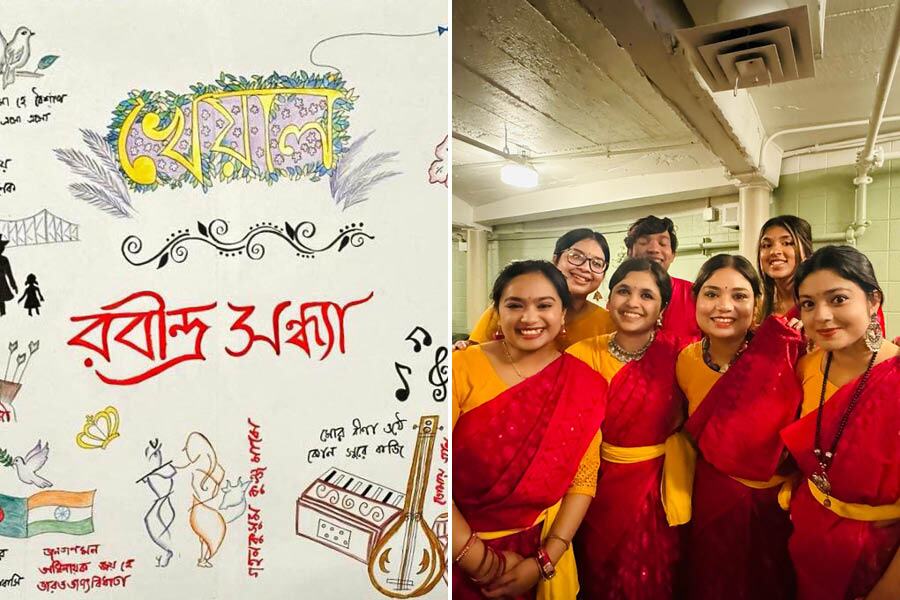
Rabindra Jayanti programme organised by Kheyal
Kheyal is unique because of its approach that transcends religiosity. The first event organised by them was their Noboborsho celebrations in 2023, which saw a footfall of more than a hundred people. Thereafter, they celebrated Rabindra Jayanti, Basanta Utsav and Durga Puja. During Basanta Utsav, they don’t focus on worshipping goddess Saraswati but instead use the occasion to celebrate Bengali culture, showcasing how Basanta Utsav is celebrated in Santiniketan.

The 'alpona' made by the students during Basanta Utsav
Similarly, during Durga Puja, they just have the pushpanjali in the mornings and focus more on the cultural programmes in the evenings. Tamsuk Paul, one of the club’s members who contributed to its name, emphasised that Kheyal’s “prime vision is to celebrate and promote Bengali culture”.
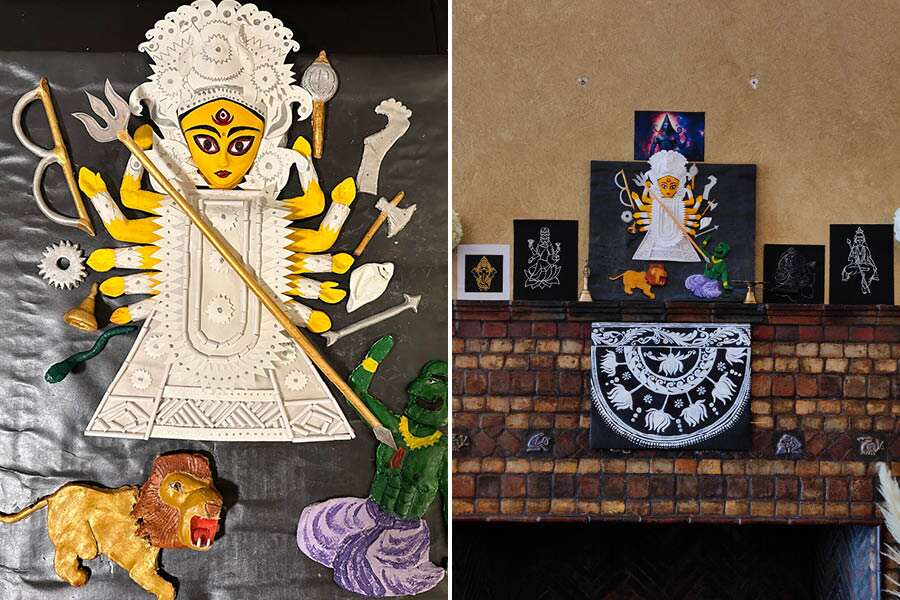
During Durga Puja, they have the pushpanjali in the mornings and focus more on the cultural programmes in the evenings
Tannistha Mondal, a first-year Ph.D. student at the university who led the decoration team for Basanta Utsav and Durga Puja said that Kheyal allowed her to “find a home away from home”. “I am the current cultural secretary of Kheyal. I also designed Kheyal’s logo and led the Durga Puja and Basanta Utsav decorations — and supervised the team that made a clay Durga idol from scratch. What we have created is going to resonate with anyone who is homesick in a foreign land,” she added.
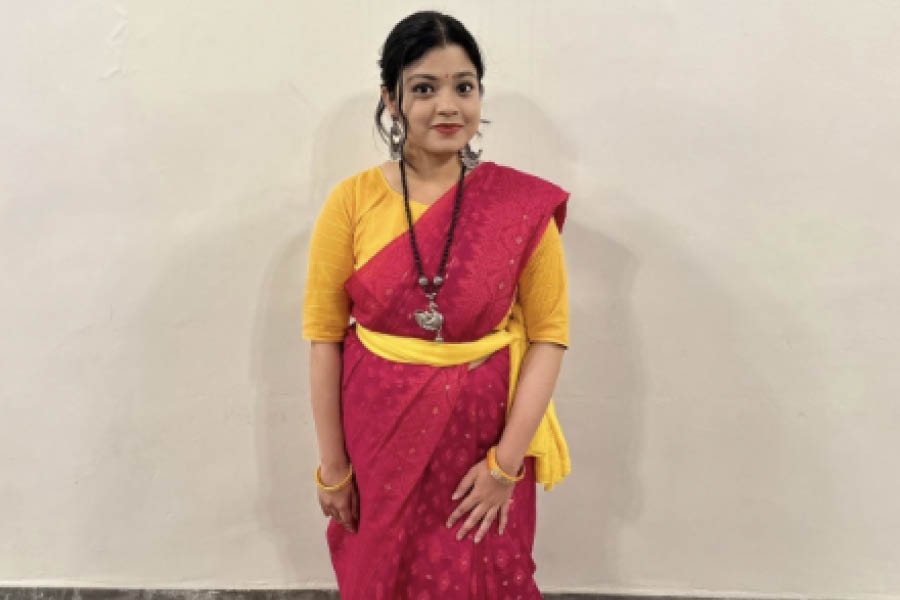
Tannistha Mondal, a first-year Ph.D. student at the university who led the decoration team for Basanta Utsav and Durga Puja
In a bid to get non-Indians interested in Bengal’s culture, the club also organised a movie night, where they screened Satyajit Ray’s Hirak Rajar Deshe. Much to their surprise almost 15 non-Indians attended the screening and enjoyed the movie. Not only that, they also enjoyed handmade sweets, such as malpua and lyangcha, served during various events.

Anchita Addhya, with her live art that she painted during Rabindra Jayanti
Even during Rabindra Jayanti, a typically Bengali celebration, Kheyal saw more than a hundred people attending the event. To ensure that the diverse audience understood the essence of Tagore’s songs, they had Anchita Addhya perform a live art demonstration depicting the different seasons that the singers on stage sang about. “Being a part of Kheyal has made me more appreciative of the beauty and translatability of Bengali literature and culture. Our goal has been to engage people from different ethnic and cultural backgrounds with all things Bengali — including celebrations, art forms and food,” said Anchita.
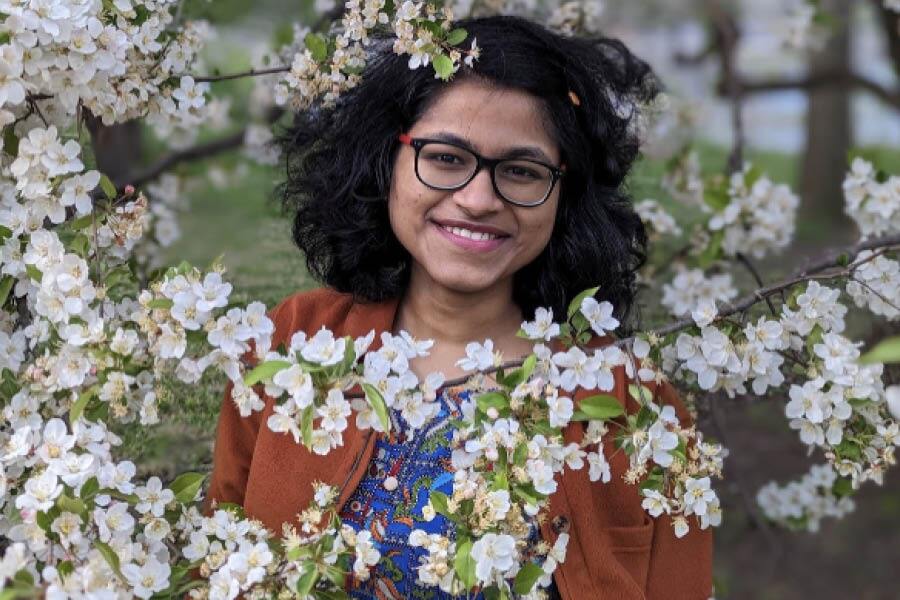
Pratyasha Chakraborty, the treasurer of Kheyal
Similarly, for Pratyasha Chakraborty, the treasurer of Kheyal, one of the best aspects of being a part of the team is the enthusiasm and dedication of the members in ensuring the success of each event. “A highlight of my experience with Kheyal was leading the decoration team for the Rabindra Jayanti programme, and centering the decorations around depictions — using pictures and paper handicrafts — of the different stages of the life of Tagore,” she remarked.
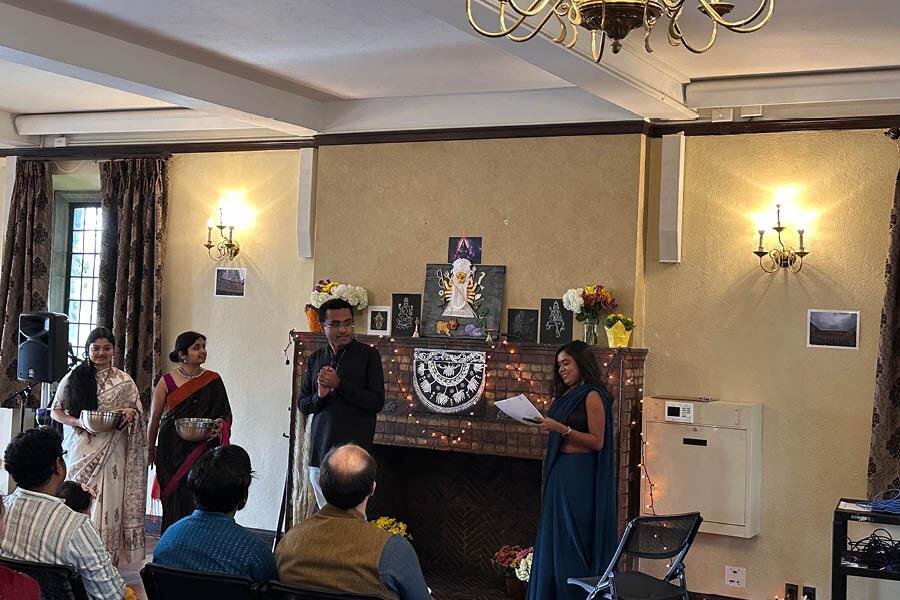
Pushpanjali during Durga Puja
“We also want to include non-Bengalis. Last year, during Nabo Borsho, the rangoli that we had was made of a 2000-piece jigsaw puzzle. That was led by Pranjal Warade, a Ph.D. student in mathematics, who hails from Maharashtra,” added Soumik.
The future of Kheyal…
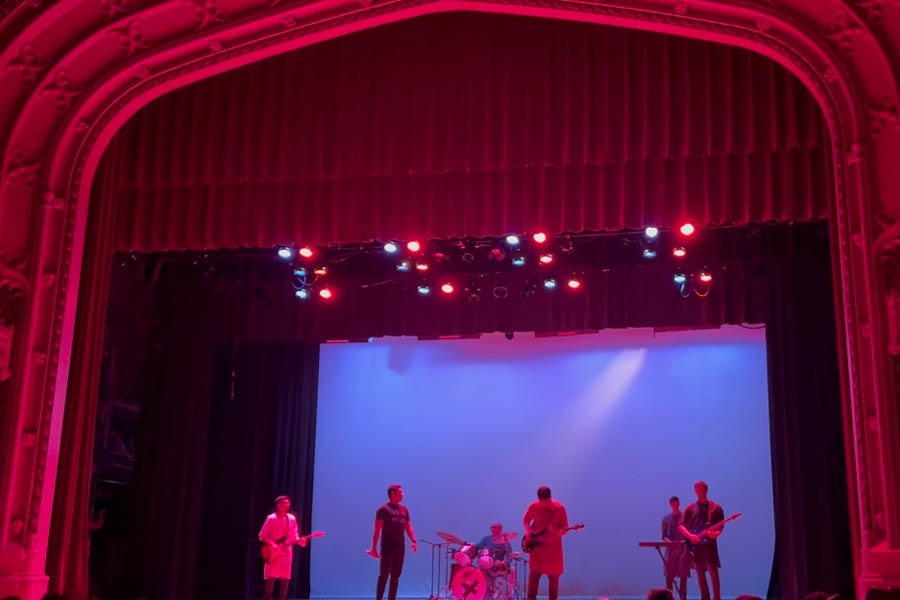
Anish Mukherjee performing a Fossils song during a university event featuring Kheyal
In May, Kheyal will celebrate its first anniversary. The founding members are planning a fest, like one of those they enjoyed during their college days. While the details are still being finalised, they aim for sophisticated, well-rehearsed performances that uphold Bengali culture. But they also want the fest to be inclusive by having provisions for people from different regions of India to be able to perform their art or music. They are opening doors for anyone interested in being part of Kheyal’s decision-making body. They believe that when people are a part of the organisation and decision-making process, they develop a deep sense of belonging.

Anish Mukherjee, the social media lead of Kheyal
Anish Mukherjee, the social media lead of Kheyal, points out that the club goes the extra mile in ensuring the events are diverse and accessible to non-Bengalis as well. “This has resulted in the formation of a diaspora that is centred on Bengali culture but not necessarily exclusive to Bengalis,” he added.
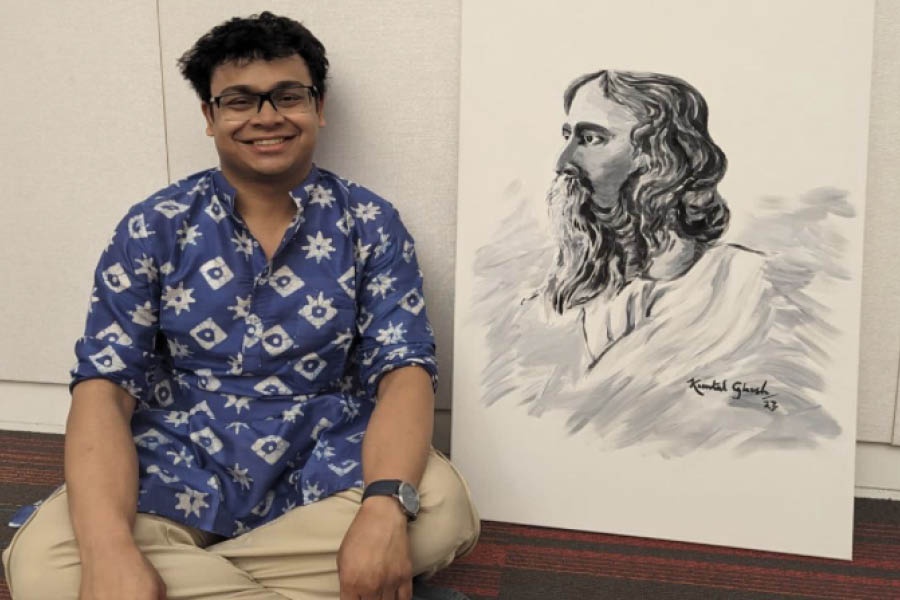
Kuntal Ghosh, the decoration team leader of Kheyal
The decoration team leader of Kheyal, Kuntal Ghosh, echoed a similar sentiment. “After a year, Kheyal not only stands as a representative of Bengali culture, but is a platform where anyone, irrespective of their cultural and ethnic background, can feel at home. Our goal has always been to share our culture and heritage with people from different parts of the globe. To me, Kheyal is not just an avenue for having Bengali celebrations but also a platform for performing — be it elocution or art!” he said. Kheyal has also allowed founding member, Aabesh Bhattacharya to rekindle his passion for music. He now regularly performs at Kheyal’s events.

Soham Bonnerjee, the event and advertisement secretary of Kheyal
“Kheyal, in my eyes, has been successful in bringing the Bengali diaspora a little closer and has also managed to showcase Bengali culture to the other international communities here at the University of Chicago. We are still growing, which makes the future something to look forward to. The Kheyal family continues to include new members and remains a significant part of our lives,” signed off Soham Bonnerjee, the event and advertisement secretary of Kheyal.
